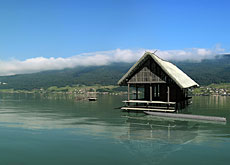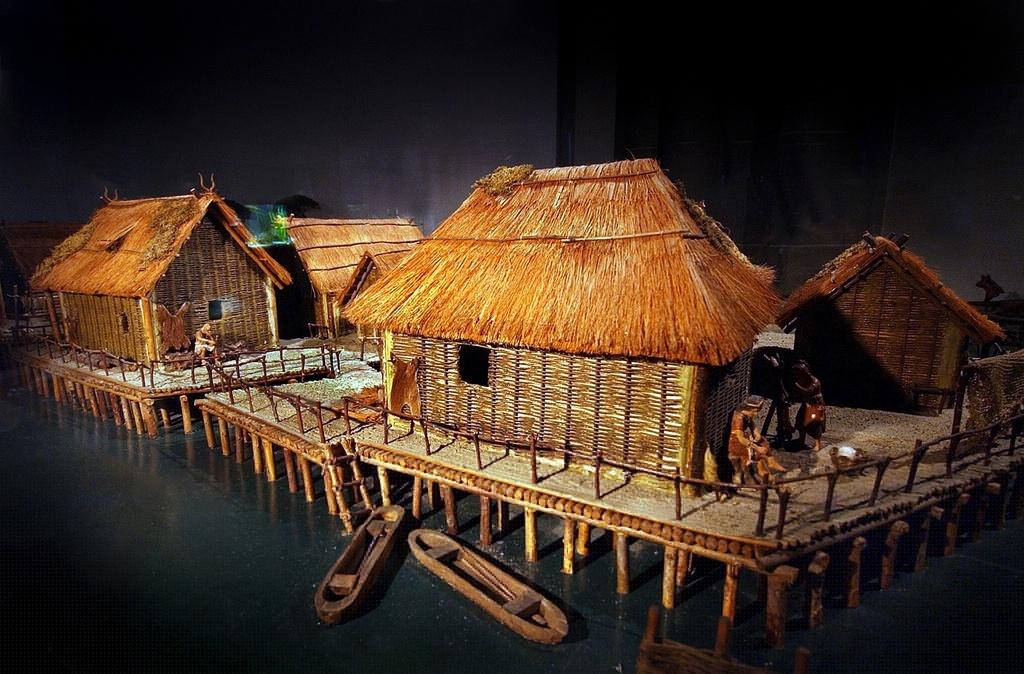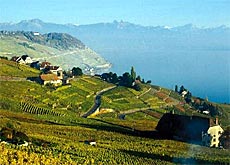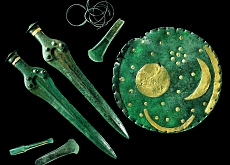Prehistoric find located beneath the waves

Archaeologists have discovered traces of Switzerland’s oldest known building, but it will never draw tourists: it lies underwater in the middle of a lake.
Since it was made of wood scientists used dendrochronology – the technique of dating by tree rings – to give a precise figure of 3863 BC.
The find in Lake Biel, northwest of the Swiss capital, Bern, was described as “sensational” by Albert Hafner, who is in charge of underwater archaeology in the region.
Divers working for the cantonal archaeological service came upon the site in the winter of 2006 when they were investigating prehistoric villages built on piles in the once densely populated area of Sutz-Lattrigen.
Pile villages have been found in and near many Swiss lakes. Wooden stakes were driven into the ground to support a platform on which houses were then built.
Changes in the level of the lakes mean that many remains are now underwater, but when they were first built they stood on the edge.
Fish traps
The newly found construction in Lake Biel is different. It was a large rectangular structure standing alone 200 meters from shore, which meant it was clearly not a dwelling house.
Three circles of stakes discovered not far away were the clue to its function. The circles were fish traps, and the building would have used by fishermen to store equipment and perhaps to smoke fish, Hafner explained.
“This is the first time we have found a prehistoric fishing place in one of our Swiss lakes,” archaeologist Cynthia Dunning told swissinfo.
“But one find always brings another one. I hope we’ll find more.”
The closest known parallel comes from the Baltic area.
The site has been meticulously recorded, and all possible information has been gleaned from it. The piles are now being left where they were, and may disappear gradually.
Oldest village
Erosion is a serious problem in the area of Sutz-Lattrigen, where archaeologists have been active for 20 years.
The oldest villages in the area go back to the fourth millennium BC, and the most recent to 1750-1660 BC.
Over 30,000 square meters of the lake bed have been examined, and thousands of objects brought to the surface.
To preserve this important part of Swiss heritage, the archaeological service has carried out rescue digs and implemented anti-erosion measures.
Experts are using special blankets that cover the sites to prevent them from disappearing and preserve items where they are for the future.
TV programme
Pile dwellers are close to the Swiss heart. The country is particularly rich in these villages on almost all the major lakes.
When they were first discovered in the 19th century, they were seen as part of a common heritage and used to build a sense of national identity.
One of Switzerland’s hit TV programmes of this summer was a reality show in which ten people spent four weeks living as pile dwellers in a specially reconstructed village.
The show used findings from the archaeological research carried out over the past 20 years, which has changed some of the traditional views of the Neolithic way of life.
The site at Sutz-Lattrigen aims to get a further boost in the coming years. Together with similar sites in the area it hopes to be included in the Unesco World Heritage List.
swissinfo, Julia Slater at Sutz-Lattrigen
Villages were built on piles on the shores of lakes from the late Neolithic to the Bronze age.
They were first rediscovered on Lake Zurich after the dry winter of 1853-4 left the water level particularly low.
Subsequently they were found on other lakes, including Lakes Biel, Neuchâtel, Murten, Lucerne, Zug and Constance.
Dendrochronology is an archaeological dating technique which uses the tree ring growth patterns.
Trees add one ring each year. The width of each ring depends on the weather.
By comparing samples of wood down the centuries researchers have built up a historical sequence of these patterns, enabling them to date samples thousands of years old.

In compliance with the JTI standards
More: SWI swissinfo.ch certified by the Journalism Trust Initiative



You can find an overview of ongoing debates with our journalists here. Please join us!
If you want to start a conversation about a topic raised in this article or want to report factual errors, email us at english@swissinfo.ch.